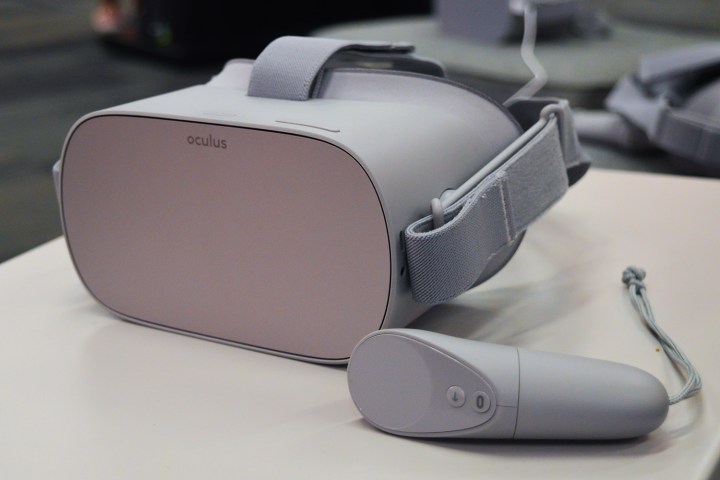
Virtual reality might be an amazing, awe inspiring technology, but it’s not taken off quite like many proponents expected it to. There may be a few million HTC Vives, Oculus Rifts, and PSVR headsets out there now, but in the two years since the release of the two major consumer VR headsets, there hasn’t been much in the way of a VR revolution. The Oculus Go, however, has the potential to change all that.
Don’t get us wrong. We love the Vive, we love the Rift, and the Vive Pro has us excited about the potential for the future. But the Oculus Go — and potentially the Vive Focus when that shows up — has much greater mainstream potential. While it’s lower-powered compared even to mid-range console VR offerings, the Go still solves the most important of VR’s problems: Getting your granny to use it.
As much as many of virtual reality’s big technological hurdles have been cleared in recent years, there have still been a number of really big issues with it. The biggest of all has been the additional requirements. With a Vive or Rift you need a decent gaming PC to run it. You need the technical know how to set up sensors and install software and drivers. You need to follow calibration tutorials for motion controllers and reset them if they start to drift.
The Go doesn’t have any of that. You charge it up, put it on your face, and you’re off and running. Even the Gear VR needed you to have a specific model of smartphone and know how to plug it in correctly, using controls on the side of the headset itself for input. The Oculus Go lets your grandmother pop on a VR headset, use a remote-like controller that will feel instantly familiar, and dive straight into a VR video call with her grandkids.

Building on the Gear VR’s portability, the Oculus Go is also completely wireless, so your older relatives won’t trip over anything. Although the three-degrees-of-movement means they aren’t walking around when in VR, the medium is perfect for those with reduced mobility.
The Go also solves VR’s chicken and egg content problem by launching with full access to more than 1,000 Gear VR applications right out of the gate. We have a few favorites, but there are hundreds of great ones, not to mention the always improving Facebook-integration for VR socializing. Considering Facebook appears to be losing touch with younger generations, it may be that the elderly make up much of the social network’s user base before long anyhow.
If it seems silly to focus on VR hardware for the elderly though, consider that the Nintendo Wii is one of the most popular video games consoles ever, a major reason for which was its accessibility. Even the Queen of England loved it. Point being, that to become a mainstream technology as seen in universes like Ready Player One, virtual reality needs a wider scope than gamers and tech-heads. It needs to be easy, versatile, and untethered from other hardware and systems. The Oculus Go is exactly that at a price that’s far cheaper than most spend on smartphones.
The Oculus Go might not be the best VR headset for you, but your grandma will probably love it.


